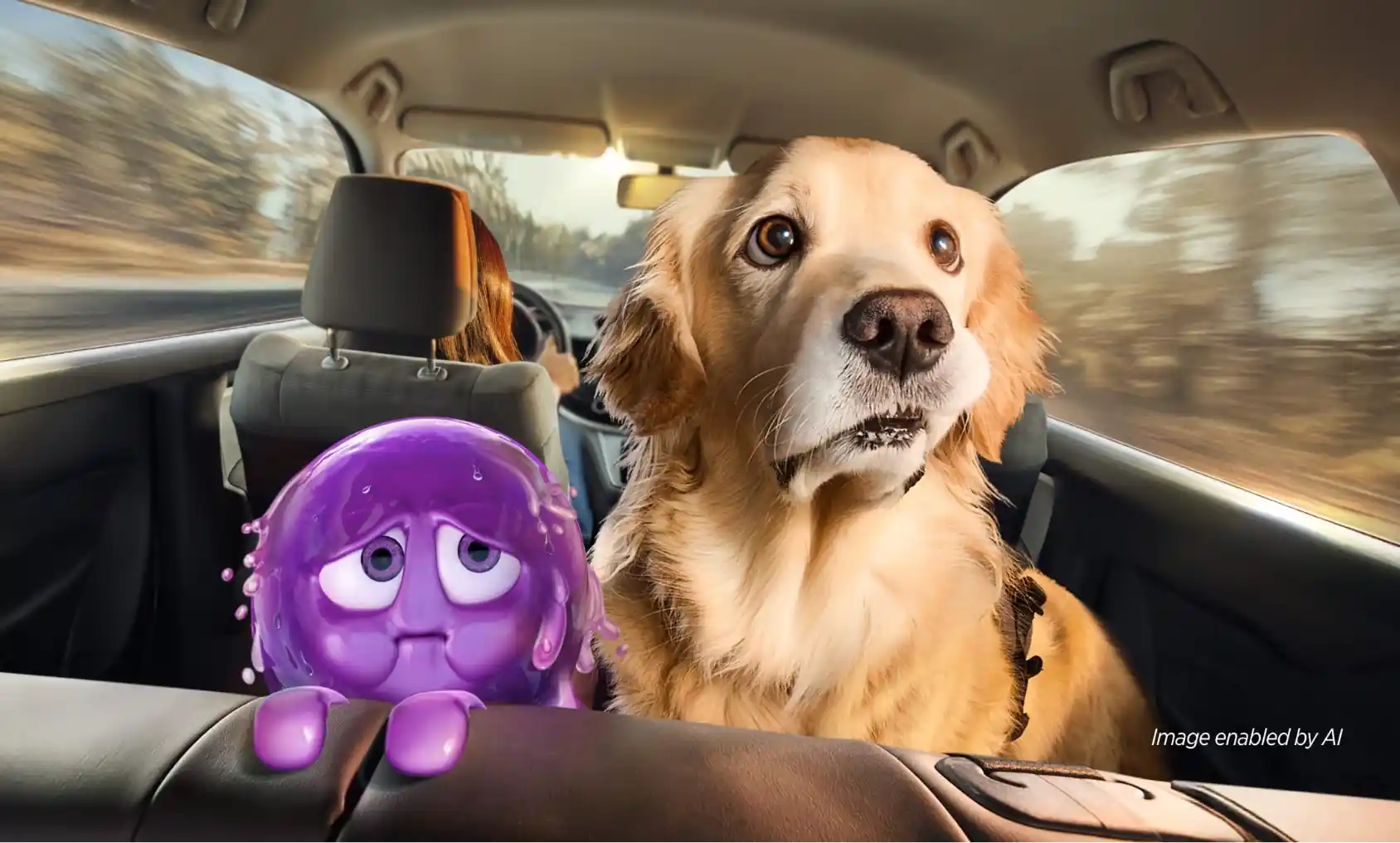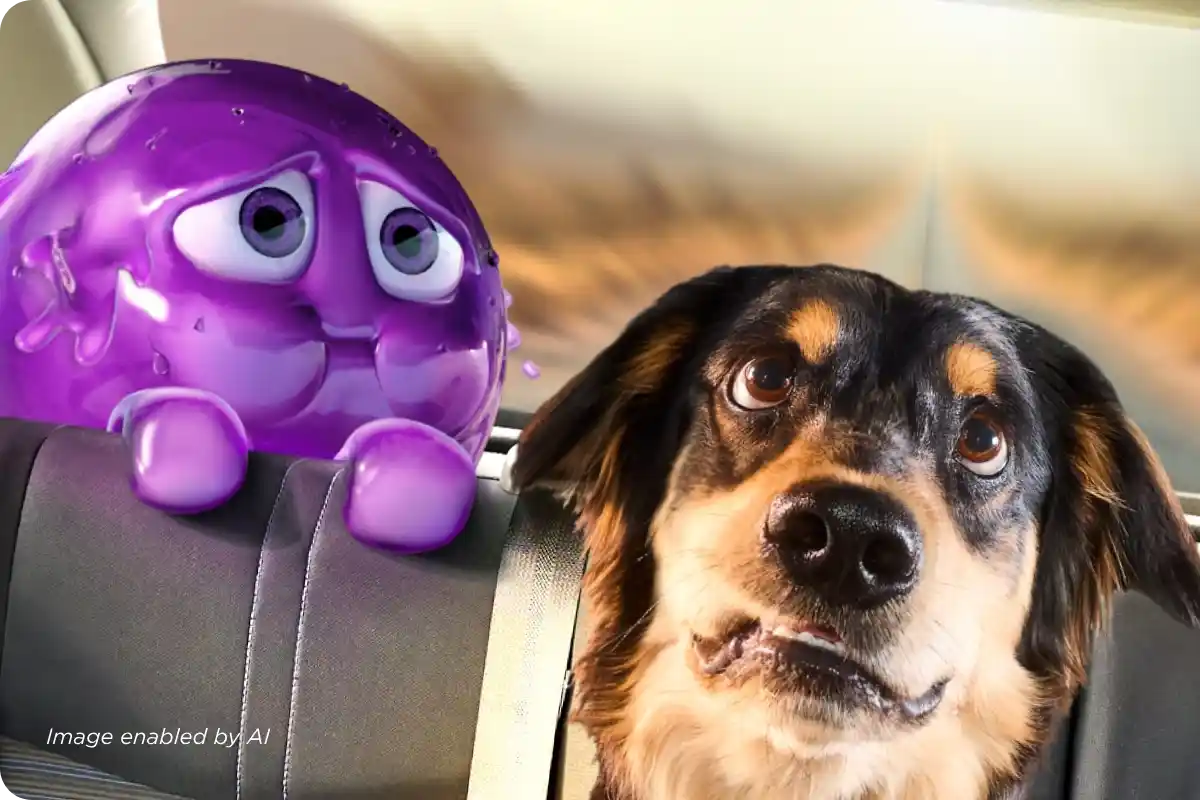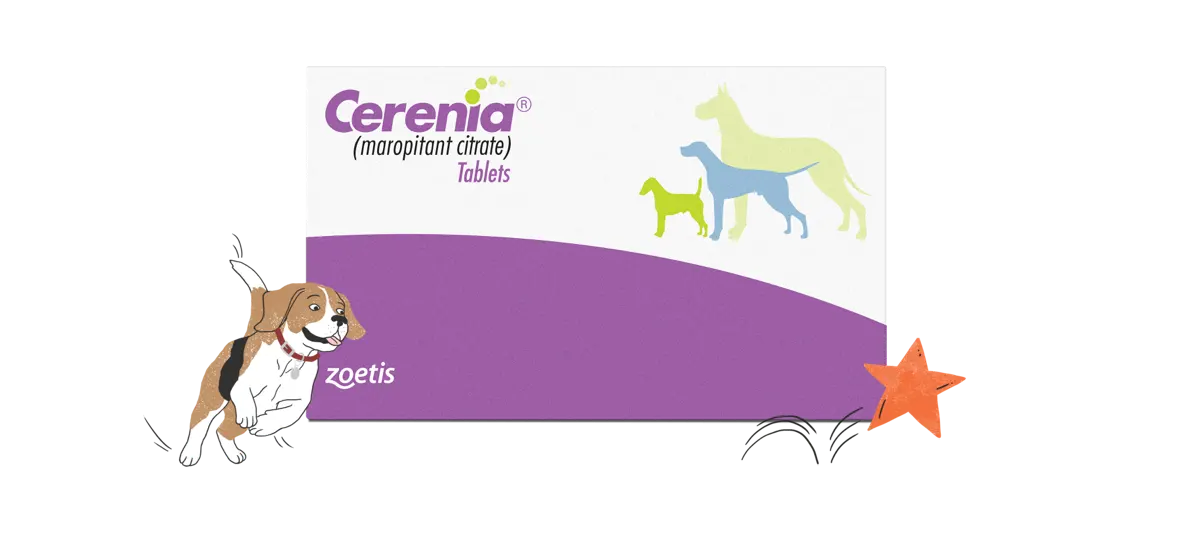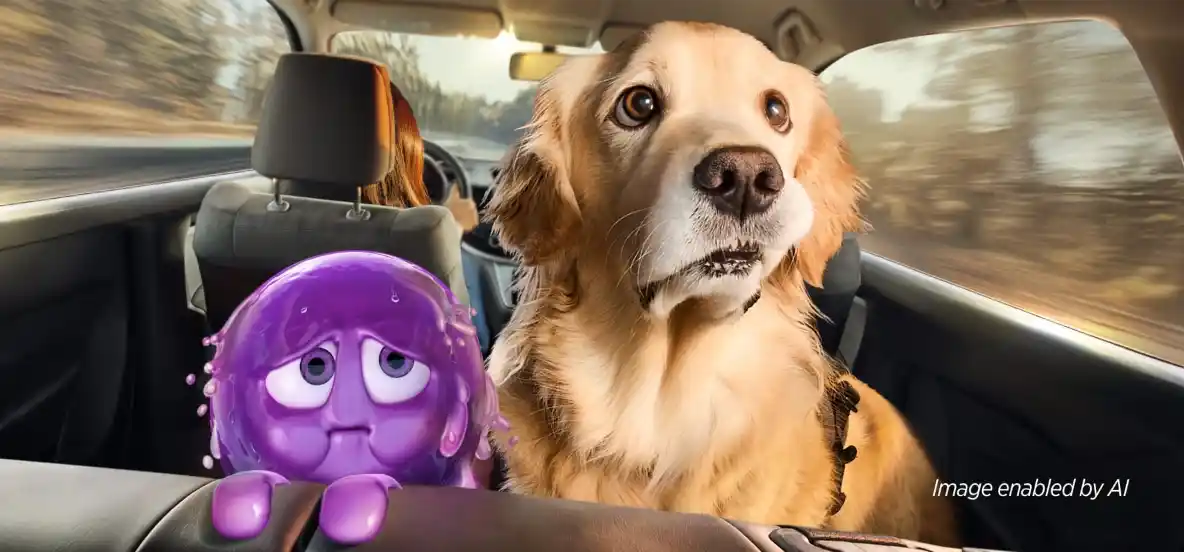
Trouble in the Backseat?
Ask your vet how Cerenia can prevent vomiting due to motion sickness.

Does Your Dog Get Car Sick?
Signs of motion sickness in dogs:
- Excessive lip licking
- Excessive panting
- Inactivity
- Shaking
- Dry Heaving/vomiting
- Drooling
- Whining
- Yawning
- Bracing stance
Don’t Let Mo Ruin Your Dog’s Ride
Meet Mo. He’s the way dogs who experience vomiting due to motion sickness feel on the inside. If your dog has a rough time on car rides, he may look familiar. But, Cerenia can help you kick him to the curb.

What Does Motion Sickness in Dogs Look Like?
If you think Mo’s been hitching a ride with your dog, here are a few things to look out for.



Cerenia Can Prevent Your Dog’s Vomiting Due to Motion Sickness
The #1 choice among veterinarians3
- Convenient tablet for safe and easy dosing.
Non-drowsy formula.
#1 vet choice to help prevent vomiting due to motion sickness in dogs.3

Veterinarian-Approved Articles
Frequently Asked Questions
Making sure your dog’s stomach is empty before the ride can help ease your pup’s car sickness. Making frequent stops can also help. But Cerenia Tablets are veterinarians’ first choice for preventing vomiting due to motion sickness in dogs.3 It’s the first veterinary FDA-approved medication for canine vomiting due to motion sickness.*
Cerenia is non-sedating, which means it shouldn’t cause drowsiness. So when you reach your destination, your buddy should be their usual self. This is different from human medications such as Benadryl® and Dramamine®, which may cause drowsiness and are not FDA-approved for vomiting in dogs.
The active ingredient of Cerenia is maropitant citrate, a neurokinin-1 (NK-1) receptor antagonist. Maropitant blocks the action of substance P- a neurotransmitter involved in vomiting—in the central nervous system. By blocking substance P from binding to the NK1 receptor, maropitant can prevent vomiting. Cerenia starts working quickly to prevent or treat your pet’s vomiting. It’s effective for about 24 hours.
The following adverse events are based on post-approval adverse drug experience reporting. The following top 5 adverse events reported for dogs are listed in decreasing order of frequency: anorexia, depression/lethargy, hypersalivation, vomiting, and diarrhea. For more information about potential adverse events see Prescribing Information.
Be sure to follow your veterinarian’s recommendations for Cerenia as prescribed. To prevent vomiting from motion sickness, give your dog Cerenia with a small amount of food at least 2 hours before traveling. You can do this once a day for up to 2 days in a row.

IMPORTANT SAFETY INFORMATION: See full Prescribing Information. Use Cerenia Tablets for acute vomiting in dogs 2 months and older, and for prevention of vomiting due to motion sickness in dogs 4 months and older. Safe use has not been evaluated in dogs with gastrointestinal obstruction, or those that have ingested toxins. Use with caution in dogs with hepatic dysfunction. In people, topical exposure may elicit localized allergic skin reactions, and repeated or prolonged exposure may lead to skin sensitization.
Benadryl® is a registered trademark of Johnson & Johnson Consumer Inc. or one of its affiliated companies. Dramamine® is a registered trademark of Prestige Brands Holdings, Inc. or its licensors. Bonine® is a registered trademark of Insight Pharmaceuticals LLC.
*Dramamine®, Bonine®, Benadryl® and herbal supplements have not been tested and approved by the FDA-CVM for use in dogs.
References:
Data on file, ZMR: The Harris Poll: Cerenia Sileo Omnibus December 2018, Zoetis Inc.
Data on file, Burke Dog Owners Motion Sickness Experience Study 2025, Zoetis Inc.
Data on file, 2020 Cerenia A&U Study - Veterinary Report, Zoetis Inc.
The product information provided in this site is intended only for residents of the United States. The products discussed herein may not have marketing authorization or may have different product labeling in different countries. The animal health information contained herein is provided for educational purposes only and is not intended to replace discussions with an animal healthcare professional. All decisions regarding the care of a veterinary patient must be made with an animal healthcare professional, considering the unique characteristics of the patient.


